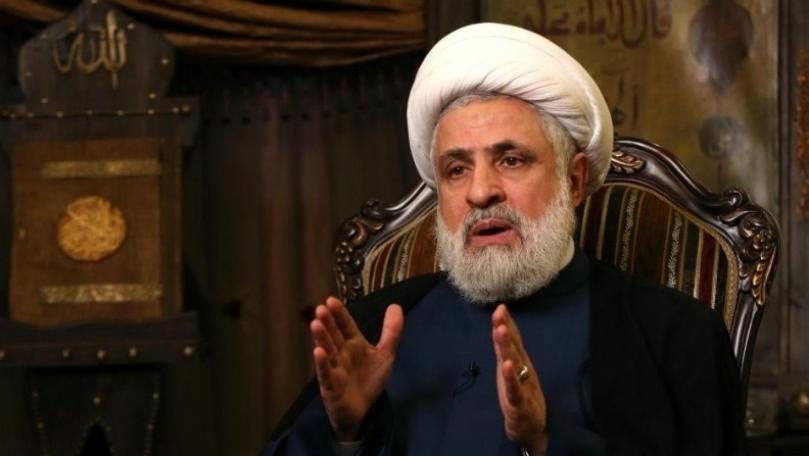Aryn Baker
The Financial Times
Throughout much of its short existence as an ostensibly sovereign state, Lebanon has functioned not just as a proxy battleground in which neighbours communicate by car bomb but as a sort of political ideogram suggesting half-decipherable regional trends.
Disentangling the parochial psychodrama from predatory regional menace, with Syria and Israel, Iran and Saudi Arabia as the main external actors in Lebanon’s recent history, is always tricky. The recent fall of the government in Beirut appears to combine elements of both.
The resignation last month of Prime Minister Najib Mikati stirred fears that Lebanon, which has tamed but far from overcome the raw sectarianism uncaged by its 1975-90 civil war, would be subsumed into the sectarian bloodletting in Syria.
The civil war in that country is not just a national tragedy but a regional threat. At home, Bashar al-Assad’s shrinking minority regime, built around his Alawite sect, an esoteric splinter of Shia Islam, has resorted to unlimited violence but is failing to put down an insurgency dominated by Syria’s Sunni majority.
That makes Syria a new frontline in the fratricidal conflict worldwide between Sunni and Shia Muslims, reignited by the Anglo-American invasion of Iraq 10 years ago that brought the Shia majority there to power. In Lebanon the Sunni-Shia contest has almost eclipsed antagonism between Muslims and Christians, who are divided between the two camps.
Furthermore, as part of its struggle for survival, the Assad regime is constantly threatening to set the region on fire – and nowhere more so than in Lebanon, which Syria occupied for 29 years until 2005.
But what is, on the face of it, rather puzzling, is the behaviour of Hizbollah, the Shia Islamist paramilitary movement, allied to Syria and beholden to Iran, and the most powerful force in Lebanon. Hizbollah seems to be the cause of the fall of the Mikati government, over which it was considered to exercise a large measure of control.
Mr Mikati’s replacement is Tammam Salam, scion of a historic Sunni dynasty, close to the opposition and Saudi Arabia. Why would Hizbollah make this sort of move on the region’s three-dimensional chess board?
One possible answer is that Iran, patron of Hizbollah and enemy of Sunni Saudi Arabia, has made a judgment. In this reading, the fall of the Assads is inevitable and the Shia theocrats of Tehran are trying to consolidate control in Lebanon, just as they are in Iraq, where their allied Shia Islamist government of Nouri al-Maliki has gathered almost all the reins of power.
One reason Mr Mikati resigned was because Hizbollah refused to extend the term of Ashraf Rifi as head of Internal Security Forces, the last Lebanese security stronghold Hizbollah and its allies did not control. Real power is what counts. The key to the ideogram is that the interests of Iran, Hizbollah and the Assads can collide as well as coincide.
Last August, General Rifi’s ISF uncovered an alleged Syrian plot to bomb sectarian targets in Lebanon, arresting Michel Samaha, a former Lebanese cabinet minister and close adviser to President Assad. Quite how many of Syria’s guns-for-hire must have said No before Damascus alighted on a courtier like Mr Samaha for the job is another puzzle. Hizbollah did not lift a finger to defend the minister (though the spy chief who unravelled the operation, Wissam al-Hassan, was assassinated).
Hizbollah, while doing what it can to help the Assads inside Syria, is trying to keep the lid on at home. It does not want another war in Lebanon but, above all, Iran wants to preserve Hizbollah as its spearhead in the Levant, a deterrent in the greater game against the greater Satans (the US, Israel, Saudi Arabia and so on). “Iran is not going to put Hizbollah at risk as a strategic asset to save Assad,” says a leading Lebanese Sunni politician.
By consolidating its remaining regional assets, Iran may be trying to strengthen its hand in the nuclear poker game it is playing with the international community. At a time when Washington is engineering a rapprochement between Turkey and Israel – respectively Iran’s greatest rival and enemy in the region – it makes sense.
Hizbollah, for all its military might, has been dented by scandals and setbacks, and faces an uncertain future. Its leaders are probably realistic enough to know the Assads cannot win and that they could be left on the wrong side of history. Both Iran and Hizbollah may be reading shifts within the dynamic stalemate of the Syrian conflict itself.
In recent weeks, sources in the Alawite heartland say the Murshidi tribe, a sub-sect within the Alawite community about 300,000-strong, has turned against the Assads. A Murshidi shift in allegiance settled the last great Syrian power struggle in 1984, between Hafez al-Assad (the current president’s father) and his brother Rifaat, whose forces were neutered almost overnight.
That is unlikely to happen now. The point is that Hizbollah and the mullahs have a future without the Assads, but the Assads have no future without them.








